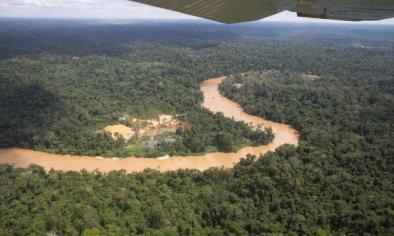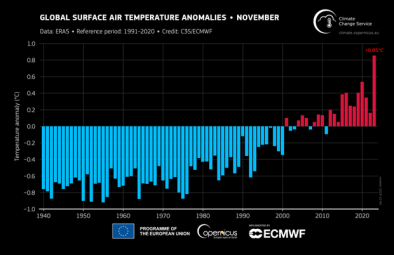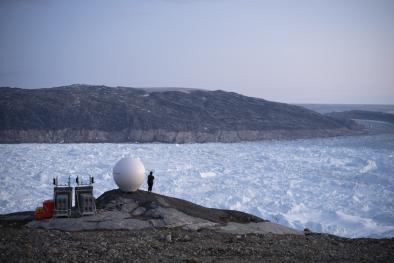Science Source
Identifying human influences on atmospheric temperature
- Uses a multimodel archive to obtain fingerprints of atmospheric temperature change
- These fingerprints are estimates of the climate responses to external forcing by the combined effects of anthropogenic factors, volcanoes, and solar irradiance
- Finds that the primary components of external forcing over the past century are human-caused increases in well-mixed greenhouse gases, depletion of stratospheric ozone, and changes in atmospheric burdens of various aerosol particles: fingerprints, therefore, mainly reflect human influences on climate
- The authors calculate signal-to-noise (S/N) ratios to quantify the strength of the fingerprint in the observations relative to fingerprint strength in natural climate noise
- For changes in lower stratospheric temperature between 1979 and 2011, S/N ratios vary from 26 to 36, depending on the choice of observational dataset
- In the lower troposphere, the fingerprint strength in observations is smaller, but S/N ratios are still significant at the 1% level or better, and range from three to eight
- Finds no evidence that these ratios are spuriously inflated by model variability errors
Related Content
Headline

Feb 15, 2024 | Climate Nexus Hot News
Amazon Could Reach Tipping Point By Midcentury
Headline

Jan 16, 2024 | Climate Nexus Hot News
2023 Smashes Hottest Year Record
Headline

Dec 7, 2023 | Climate Nexus Hot News
It’s Official - 2023 Is World's The Hottest Year On Record
Headline

Dec 7, 2023 | Climate Nexus Hot News
Earth Veering Closer To Dangerous Tipping Points


